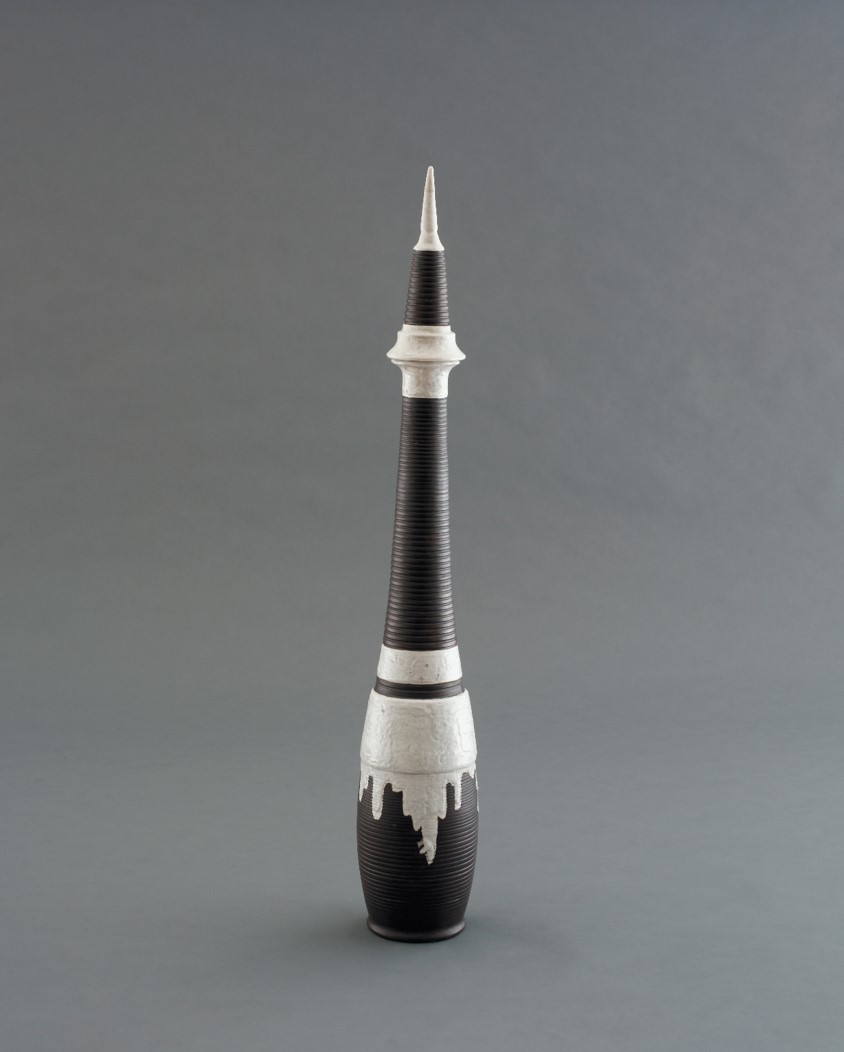Adelaide Alsop Robineau, today considered one of America’s preeminent studio potters, began her ceramics career as a china painter, painting designs on porcelain blanks produced by other craftsmen. After moving to Syracuse with her husband in 1901, Robineau started experimenting with making her own porcelain forms and quickly became a master of the medium, known for decorative techniques that included intricate excising and carving away of clay. In 1916, the Everson purchased thirty-two of Robineau’s porcelains, the first ceramics in the Museum’s permanent collection. This purchase set the course for the Everson’s long-term commitment to collecting ceramics, and the Museum now owns more than one hundred works by Robineau. This collection, the largest concentration of her work in the world, includes early examples of Robineau’s vases, bowls, and bottles, as well as her famous Scarab Vase (the topic of our first blog post). Although undated, Robineau likely began the Cinerary Urn in 1928 or 1929, using the same batch of white clay that she had used for the Scarab Vase nearly two decades earlier. Robineau originally planned to decorate the Cinerary Urn with an incised motif depicting human figures passing through tongue-like flames, but she died on February 18, 1929, leaving the urn unfinished. Robineau’s former student Carlton Atherton glazed and fired the urn, and her husband Samuel donated it to the Everson. An inscription on the bottom of the urn reads De Profundis “Clamavi”, Adelaide Alsop Robineau – Born April 9, 1865 Died February 18 1929 – Samuel Edouard Robineau – Born December 20 1856 Died (left unfinished). Today, the urn contains the ashes of both Robineau and her husband. Cinerary Urn is on view in the exhibition Earth Piece through January 5, 2020.
-Steffi Chappell, Assistant Curator


